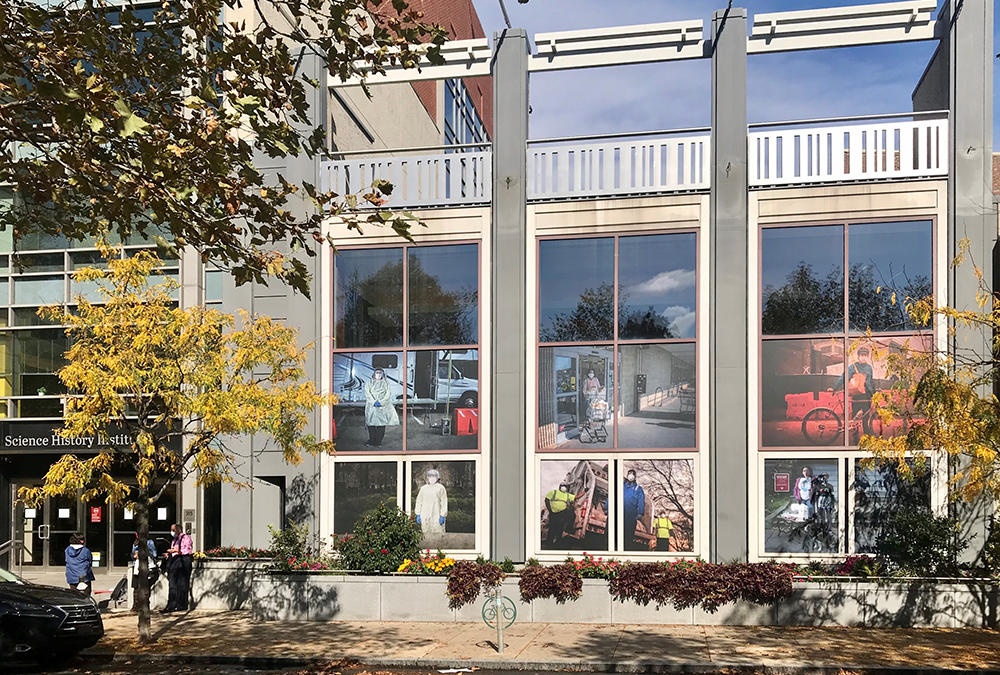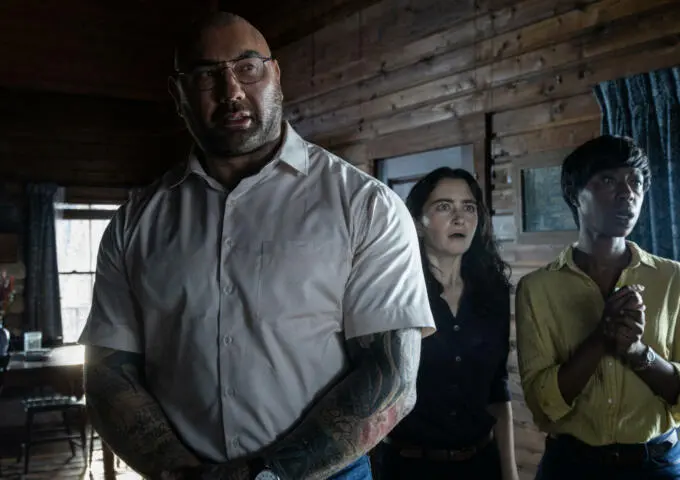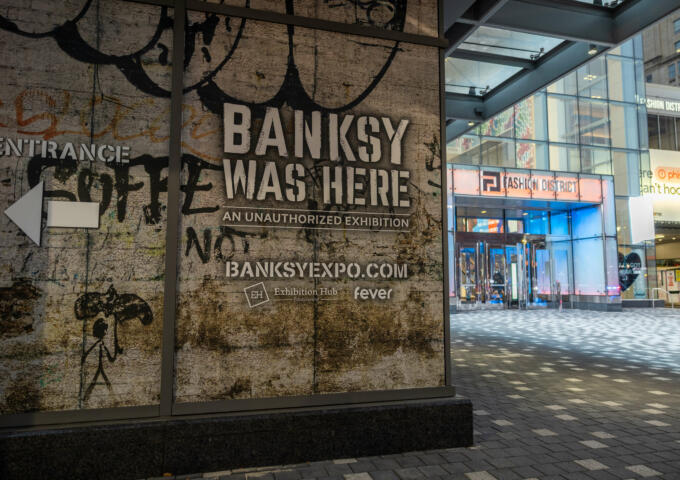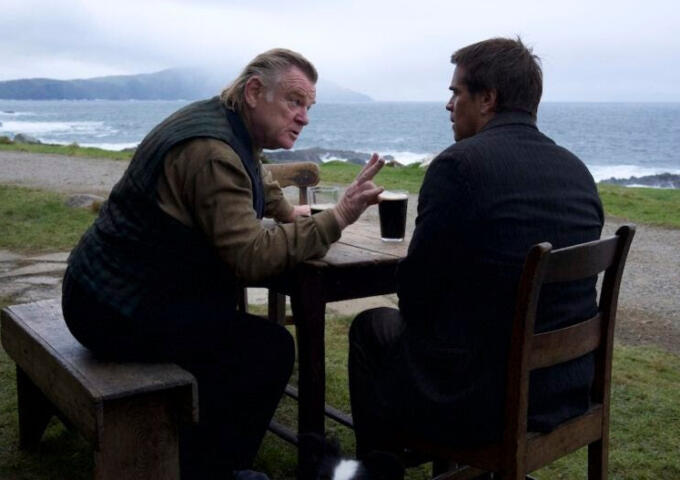By Elisabeth Berry Drago, Guest Contributor
When the City of Philadelphia declared a lockdown on March 16th, 2020, our museum — like all local museums — was immediately shuttered. We took our signboard inside and closed the doors. They wouldn’t reopen for more than a year.
What is a museum, without its visitors?
We asked ourselves that question over and over during our long closure. The everyday work that usually drove us — greeting visitors, hosting programs and tours, helping researchers, bringing people together — was suddenly impossible. Like many museums, we doubled down on the digital and launched a new web-based exhibit series. Our podcast, “Distillations,” interviewed biotech workers about the coming vaccines. But we felt disconnected, unfocused. In our personal lives, we were struggling with fear and uncertainty: we had children stuck at home, laid-off partners, vulnerable parents, friends and family working on the front lines. We wondered, does our work matter? And how do you do the work of history while you’re living through it?
What came out of these questions was “Between Us and Catastrophe,” an outdoor exhibit of Kyle Cassidy’s portraits of front-line pandemic workers, along with an audio tour and podcast series using these workers’ own words. Large-scale images of Kyle’s portraits were installed on our building’s Chestnut Street façade from October 2020 through August 2021. You can see a video tour of the exhibit, and listen to our interviews, here.
How did we get from uncertainty to a new exhibit? Well, in the spirit of “Between Us and Catastrophe,” here’s an oral history of the project, from the folks who worked on it.
How did this project begin?
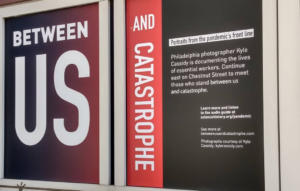
Elisabeth Berry Drago (Curator and Podcast Co-Host): “One thing we asked was, ‘Who’s going to collect all the stuff?’ COVID-19 turned mundane things — like disposable surgical masks — into iconic symbols. We wondered, what will the museums of the future display, when they talk about the pandemic time? Will there be galleries filled with nurses’ shoes, 3-D printed ventilator valves, homemade masks? In museums we call this “material culture”: material things that carry with them human attitudes, human memories, human stories. Preserving material culture is a way to preserve history, so we asked ourselves what could — or should — we collect, and how could we display it?”
Erin McLeary (Museum Director): “I had seen Kyle’s project on Twitter in June 2020 and admired it. I also knew we wanted to do COVID-related collecting but had very little bandwidth for it. I thought that maybe we could partner with Kyle and collect objects from his portrait subjects. I reached out to Kyle and he was excited. It then occurred to me that we could also use the outside of our building as an exhibition surface. I was pretty sure Kyle’s photos would map very well onto the building’s window grid.”
Berry Drago: “As soon as we saw the portraits, we said, we have to hear their stories. The images are so striking on their own, but hearing their real voices would be very powerful. This is where our podcast team came in. On “Distillations” we like to let people speak in their own words. The only question was, would the artist be open to the idea? Thankfully it was a yes!”
Mariel Carr (Senior Podcast Producer): “I was really moved by how open Kyle was about working with us, about us talking to the people he photographed, and just how enthusiastic he was about the whole thing. Artists can be protective of their work and not want anyone else to encroach. Kyle was the complete opposite.”
What was it like, collecting these stories?
Carr: “I interviewed a number of the people who were featured in the photographs, and the ones that have really stuck with me are Kishia (Instacart shopper) and Linda. Again, they were so open. They were so honest. Kishia was just so scared to go to work and described her panic attacks. In the photo she’s wearing a mask made out of paper towels and a rubber band. This was before we were all masking, and she did it, and she didn’t care if she looked crazy because she was terrified. Linda wasn’t as scared, but she was just so tired. I felt really honored to interview them. I remember I talked to Linda later at night, because she’s a nurse and has weird hours … the interview went really long and I remember thinking that she needed to talk, and that I would stay on the call for as long as she wanted.”
Rigoberto Hernandez (Podcast Producer): “What really stood out for me was how Kyle started out his project by just photographing masks that were littered around, and how he thought that was going to be a part of the landscape in the city from now on. He quickly shifted towards photographing people instead … but now I keep seeing masks in the trash on the street and I’m forced to think about how they might have ended up there. Another interesting part was that I had to gather city sounds for the audio tour. For example, the SEPTA voiceover you hear is from me getting on the train. When I stepped onto the Market Frankford line, that was the first time in a long time, because we were all working from home and I was no longer commuting. That was the moment when it hit me, how much of my daily life had changed.”
McLeary: “I very much wanted to lean into engaging audiences with stories that matter to them using the few tools we had when we were closed. And Kyle’s portraits offered an opportunity to portray ordinary people — sanitation workers, nurses — at a monumental scale on the outside of our building. It felt right to focus on experiences that were familiar and urgent.”
What have you learned from this project?
Berry Drago: “I think museums are sometimes intimidated by tackling contemporary events, contemporary history. But I think what we found is that people needed to see their experiences reflected. I think it works because we didn’t try to have some authoritative single voice: we asked multiple voices to speak, and to speak honestly, even when what they were talking about was scary and challenging.”
McLeary: “I’ve always been interested in ways to present content outside of the gallery walls, as accessibly as possible. Being able to bring this exhibit directly out into the neighborhood felt deeply meaningful.”
Hernandez: “It’s made me think about how I spent my time during the pandemic. One thing that Kyle said during his interview was that he kept thinking about how in 40 years, what is he going to say to his family and friends about what he did to help? What kind of public service did he do? And to him, photographing and documenting, this was his public service. I guess you could say that this project was my public service, but the more I think about it the more I am okay with saying to my relatives 40 years later, “I didn’t do anything.” I survived, and that was and is enough for me.”
Alexis Pedrick (Director of Public Engagement and Podcast Co-Host): “We are a history podcast. Usually, we’re talking about stuff that happened a long time ago, and even when we’re making a connection to something relevant, it’s not ‘breaking news’ level. But this was different. We were talking about something that was unfolding in real time. And we were trying to figure out what to do and how to stay safe right alongside our audience. Honestly, it was scary, but then the stories were really grounding. They remind you that there was something to hold on to — people who were actually on the front lines making a difference and doing it even though it was hard and they were scared. It’s like realizing how vulnerable you are and how much we truly depend on each other. No one does anything alone.”
Take a virtual tour through the exhibit:
Between Us And Catastrophe Video from Science History Institute on Vimeo.
